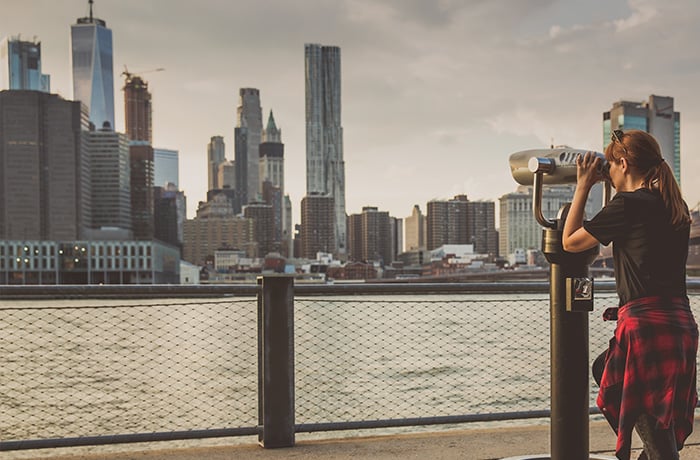Sightseeing Ottoman&'s Istanbul
01 Ağustos 2009 - Dr. Deniz EsemenliIn Istanbul magazine
Istanbul, the last capital of Mediterranean empires, is considered as a cultural centre in the world with its exemplified superfine handcraft and architectures of East Roman Empire, Byzantium and the Ottomans. The city that brought the urbanized outlines that acquired by cradling Byzantium and Ottoman civilizations for 2000 years, Istanbul, is a treasure that is laid up by the extensive ambience of rampart and also Haliç, Eyüp, Pera, Galata, unique Boğaziçi and Üsküdar, Kadıköy and Prince Islands.
Every corner of Istanbul which has staged different genres and attitudes in every political period has an exceptional vividness. The Rampart Istanbul which was the biggest and powerful fortress urban in the middle age, divided by Meşe-Divanyolu Street and side streets, emerged in a crowded and topography adaptable urbanization, forming neighbourhoods so far from the beginning of imperial and religious hierarchy. Especially, Topkapı Palace was the symbol of the sultanate, that welcomes the visitors with strong castles who comes from European part, one of the effective society of the monarchic world, faced to the intercontinental arena and located on Sarayburnu acropolis, used as a ceremonial ground, surrounded by Byzantium, Ottoman Dynasty and aristocrate palaces forums and hippodrome area, connected by Atmeydanı, Edirne and Trakya roads.
As a first centrally planned and colossal building in the world, and from that day forth, especially, which will identify imperial architecture of Istanbul, beautiful Hagia Sophia and magnificent Islamic-Ottoman social complexes, although to be an Islamic government, in name of Mediterranean authority which strictly defended “Greek” phenomenon, routinely emphasized its dominant role by Ottoman, brought a monumental and noble silhouette. The imperial emphasis that ascended with the Sinan’s Sehzade and Süleymaniye which is spread to the locality scale that typifies the classical civilization level and rested upon the peak with The Blue Mosque, has proved that it is a super power which is spread to whole of the new era even though it is in descending period by dispensing a worldwide unique archetypal of baroque genre.
Metropolitan Empire of the Ottoman
Ottomans created a metropolis waging a vital struggle with an adorable passion for Istanbul, the most crowded and prosperous metropolitan, to provide its existence comprehending the silence of the city. Ottomans kept the most productive harbour which was captured from Byzantium alive for years as an insatiable consumer by using Haliç seaport to old rival centre Galata for import goods, the navy to Kasımpasa, accumulated all food supplies to Eminönü.
Ottomans, building mosques, transformed all forums and churches in Eminönü-Beyazit line into neighbourhood mosque and covered areas, from Byzantium until today with many caravanserais, covered shopping arcades, Turkish bathes and finally monumental “ the Grand Bazaar “. The Ottoman attitude, matches up with its natural antinomy with member of aristocrats and notables which consist of Kapıkulu (member of those troops directly under the sultan's command) and scientist ,the raja which consist of small-scale retailers and commons, what Islam predicts and obviously shows relations of antinomy between mortality- eternity, wooden houses-stone public architecture.
As making law by Magnificent Suleiman, supporting Mediterranean monarchy tradition, with this purpose acting for a world empire, which built Havariyyun church and Constantine mausoleum instead of civic geometric regulation around the Fatih mosque and tomb reflected to art, which reached to top of the dynasty show with Süleymaniye and during entire 16th century. The attitude which was suitable for centralized administration perception of the Renaissance transformed into schema, on the excuse that spread of religion, the way of Ottoman classic and structure of architecture aristocrats and dynasty. However it was a consequence, when social reforms reflected to art because of social causes evident in all over the world, dervish lodges and Madrasahs which were created by unnamed aristocrat ulema and Kapıkulu soldiers changed their name as “Divanyolu style madrasahs and were now located on districts, the scholastic education was an imposition of the rising social class to the stable society.”
In late classical period, during when sultan’s household troops (kapıkulu) who besieged the Palace and killed many sultans and viziers seizing the power, met with the dynasty in Harem; other than social complexes in where rayah and aristocrats meet, residences and palace’s are observed to have a civil architecture whereas beyond the ramparts waterside mansions have changed Haliç and Bosphorus shores into a unique cultural environment.
The wooden waterside palaces which were started to be built during Sadabad Period, like sultan’s Besiktaş Palace, located in Haliç and Bosphorus; and many sultanas’ palaces in Eyüp and Kuruçeşme, and mansions and waterside mansions of Ottoman aristocrats lwere the magnificent examples of 18th and 19th centuries turning Istanbul to a romantic city with their bow windows, horizontal founding, building wings surrounding courtyards, and selamlık flats strategically located on back.
Centre of Grace and Magnificence, Istanbul
The wooden Istanbul, during when jihad age was left in the past and the Ottoman social life got civilized, social classes emerged, and mansions were at the forefront; was living the last days of classical Ottoman culture. The reformation necessity that arose from the political declension of the empire declension of the empire in the 18th century, provided the patterns to be adjusted to classical form by the rich baroque and the rococo genre experiences of Europe which thinks is still a super power and gets prepared to be the commander of the world. Nuruosmaniye, Laleli, Selimiye Islamic-Ottoman social-complexes are samples for this synthesis which blazes a trail on civil architecture. The stone barracks with atriums, dockyards, armouries which were made urgently because of the renovation and the rococo decor and mural paintings that can cope with the upper-crust conditioned west resolved the most successful synthesis of the Ottomans capital declared it as the focus of magnificence and elegance that was also approved by foreign observers.
Tanzimat reforms in a sense brought contemporary and west effects to the empire and these weak but magnificent scenery was restored with masonry by the famous architect Balyan family, however, the city began to resemble European cities and become ordinary.
The most desirable districts of the contemporary life
The estrangement controlled by colourful life-fed with full economic and social exploitation layout- in Beyoglu which compradors that western discipline created and embassies were located, dragged the Ottoman administration to the district, where Muslims and non-Muslims lived together in Beyoğlu, Yeşilköy, the Prince Islands and Kadıköy in attached buildings like turreted mansions with neo-classical, art- nouveau style having an extensive gardens and vertical strips. Thus, modern lives most feasible districts were formed on the Marmara coasts and islands. As for the palace, due to its intuitionalism and regulations, it was decorated with furniture layout suited to the diplomatic image, like Dolmabahçe Palace in which the western external image juxtaposed with traditional living customs. Whereas the strength of the palace changed into a classical pattern, like the modern but dispersed Yıldız Palace, while the empire tradition ended.
Classical tradition, which was maintained with the folk’s timber and horizontal modest dwelling, has earned neoclassical details in 19th century when dervish lodges and churches were restored; has carried a noble renunciation stance deeply until the last days of the empire. The power of the tradition experienced in social and civil life, liberalized from the mystical mist of the orientalism, masking the exploitation during the constitutional period of the Ottomans which ended with a last revolt against imperialism, and thus decorated the beautiful Istanbul and Anatolia with Seljuk and classic details of an elegant nostalgias.



